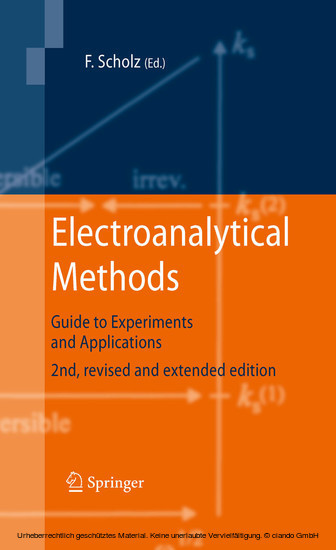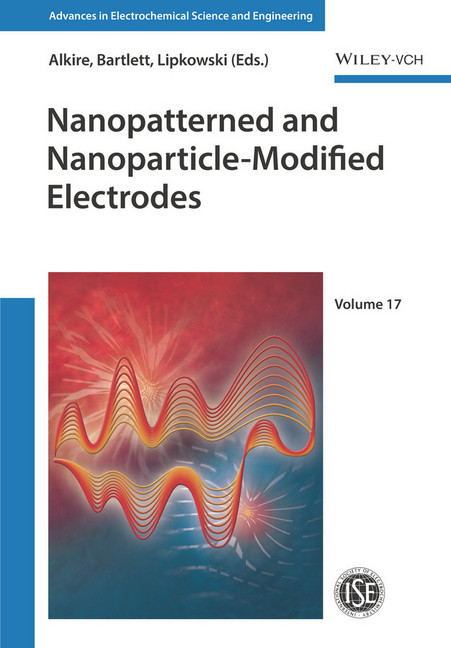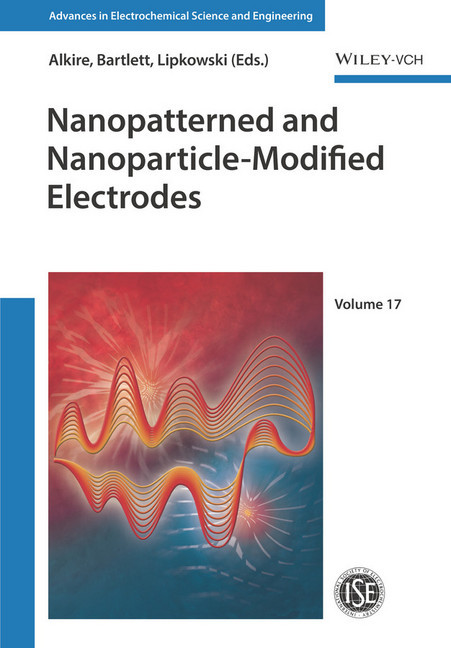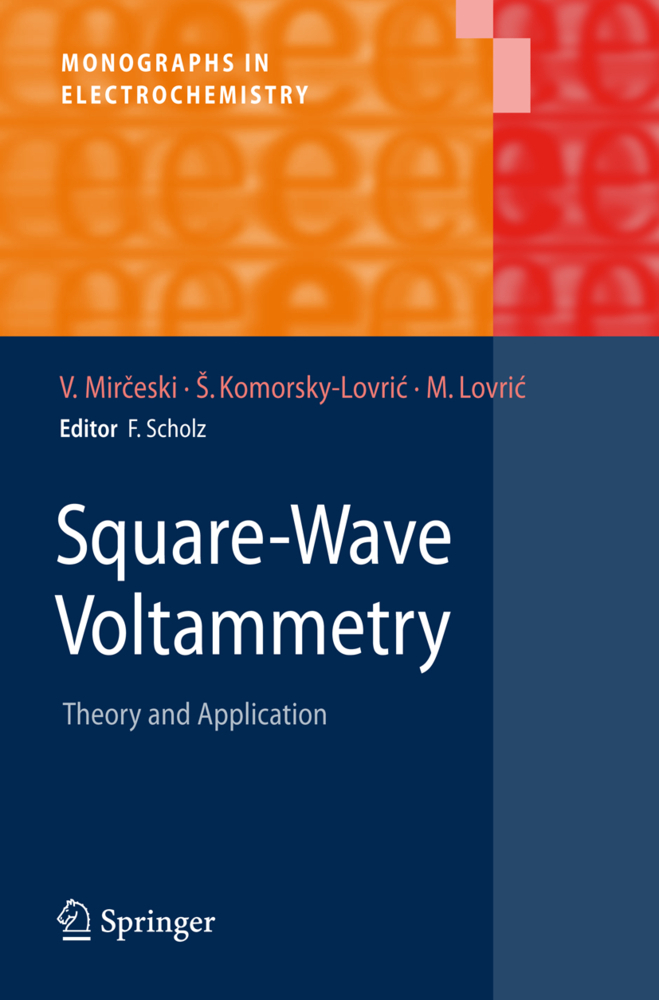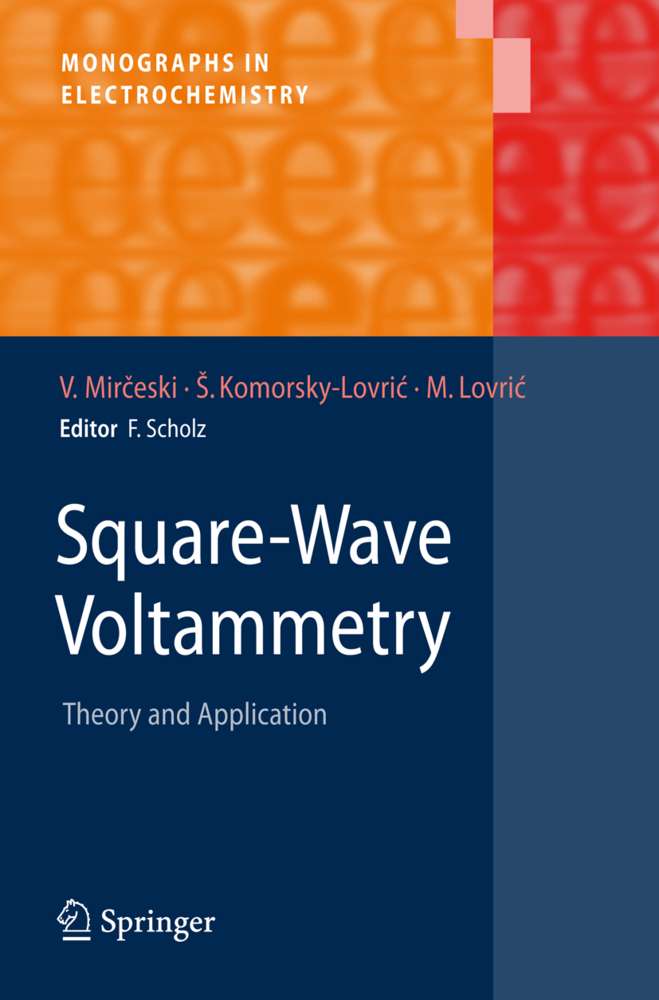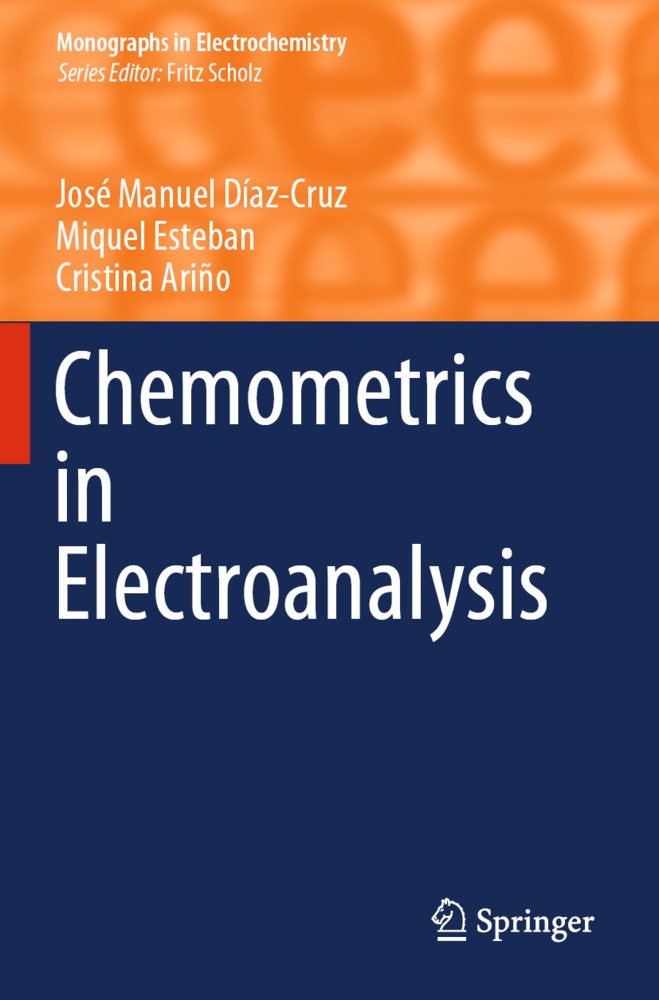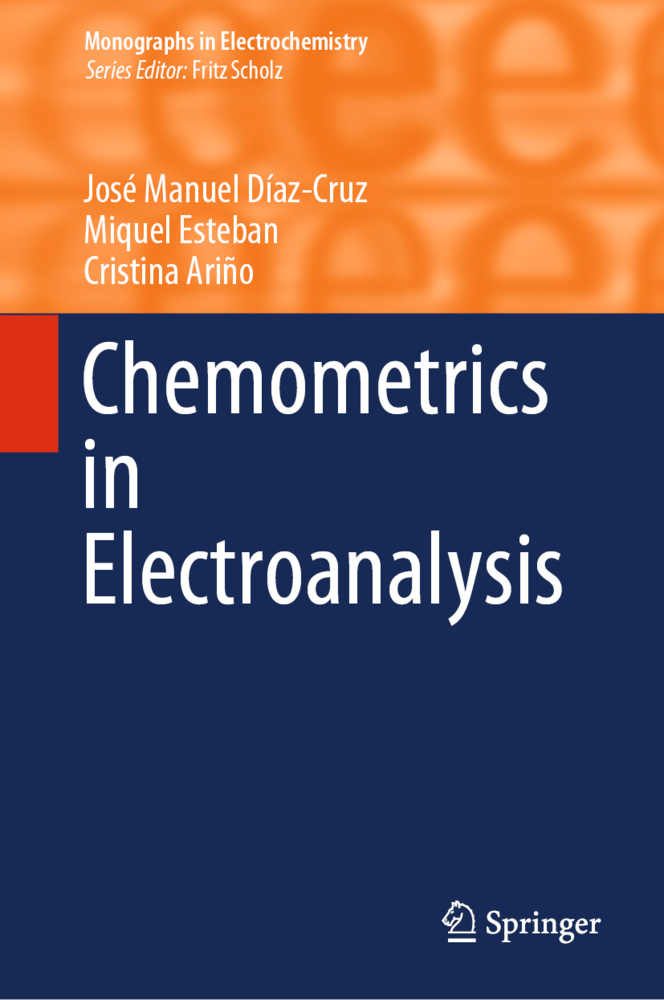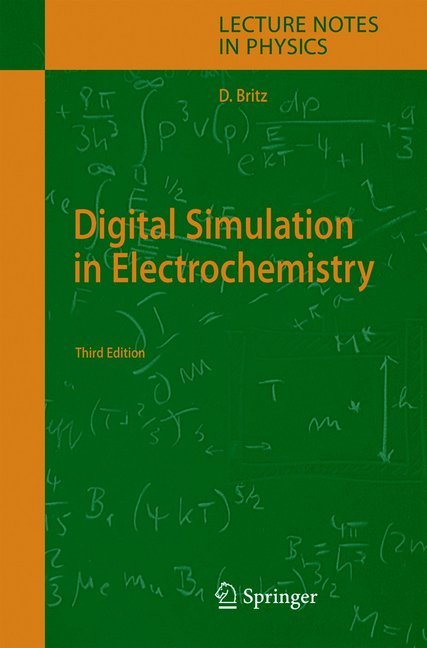Electroanalytical Methods
Guide to Experiments and Applications
Researchers and professionals will find a hands-on guide to successful experiments and applications of modern electroanalytical techniques here. The new edition has been completely revised and extended by a chapter on quartz-crystal microbalances. The book is written for chemists, biochemists, environmental and materials scientists, and physicists. A basic knowledge of chemistry and physics is sufficient for understanding the described methods. Electroanalytical techniques are particularly useful for qualitative and quantitative analysis of chemical, biochemical, and physical systems. Experienced experts provide the necessary theoretical background of electrochemistry and thoroughly describe frequently used measuring techniques. Special attention is given to experimental details and data evaluation.
1;Preface to the Second Edition;7 2;Preface to the First Edition;8 3;Contents;9 4;Contributors;14 5;Index of Symbols and their SI Dimensions;15 5.1;I. Roman Symbols;15 5.2;II. Greek Symbols;20 6;Part I Basic Electrochemistry;22 7;I.1 The Electrical Double Layer and Its Structure;23 7.1;1.1 Introduction;23 7.2;1.2 Double-Layer Models;25 7.3;1.3 Thickness of the Electric Double Layer;27 7.4;1.4 Recent Developments;28 7.5;References;28 8;I.2 Thermodynamics of Electrochemical Reactions;30 8.1;2.1 Introduction;30 8.2;2.2 The Standard Potential;30 8.3;2.3 The Formal Potential;38 8.4;2.4 Characteristic Potentials of Electroanalytical Techniques;41 8.4.1;I.2.4.1 Direct Current Polarography (Employing a Dropping-Mercury Electrode);41 8.4.1.1;I.2.4.1.1 The Half-Wave Potential E1/2;41 8.4.1.2;I.2.4.1.2 Influence of Diffusion;41 8.4.1.3;I.2.4.1.3 Influence by Amalgamation;42 8.4.1.4;I.2.4.1.4 Influence by Solution Equilibria;42 8.4.1.5;I.2.4.1.5 Influence by Irreversibility of the Electrode System;44 8.4.2;I.2.4.2 Cyclic Voltammetry;44 8.4.2.1;I.2.4.2.1 The Peak Potentials;44 8.4.3;I.2.4.3 Differential Pulse Voltammetry (DPV), Alternating Current Voltammetry (ACV), and Square-Wave Voltammetry (SWV);45 8.5;2.5 Thermodynamics of the Transfer of Ions Between Two Phases;46 8.6;2.6 Thermodynamic Data Derived from Standard and Formal Potentials;48 8.6.1;I.2.6.1 Data Derived from Standard Potentials;49 8.6.2;I.2.6.2 Data Derived from Formal Potentials;50 8.7;References;50 9;I.3 Kinetics of Electrochemical Reactions;51 9.1;3.1 Introduction;51 9.2;3.2 Relationship Between the Current Density and Potential Under Steady-State Conditions;52 9.2.1;I.3.2.1 Equilibrium;54 9.2.2;I.3.2.2 Rate Controlled by the Charge Transfer Step;55 9.2.3;I.3.2.3 Effect of Mass Transport on the Kinetics of Electrode Processes;56 9.2.3.1;I.3.2.3.1 Diffusion;56 9.2.3.2;I.3.2.3.2 Migration;60 9.2.3.3;I.3.2.3.3 Convection;61 9.2.4;I.3.2.4 Reversibility, Quasi-reversibility, and Irreversibility;62 9.2.5;I.3.2.5 Effect of the Double-Layer Structure on the Rate of the Charge Transfer Reaction;66 9.3;3.3 CurrentPotential Transients;67 9.3.1;I.3.3.1 Charging the Double Layer;67 9.3.2;I.3.3.2 Faradaic Current;69 9.4;References;71 10;Part II Electroanalytical Techniques;72 11;II.1 Cyclic Voltammetry;73 11.1;1.1 Introduction;73 11.1.1;II.1.1.1 Shape of Cyclic Voltammograms;76 11.2;1.2 Basic Principles;79 11.3;1.3 Effects Due to Capacitance and Resistance;87 11.4;1.4 Electrode Geometry, Size, and Convection Effects;90 11.5;1.5 Determination of Redox State and Number of Transferred Electrons;94 11.5.1;II.1.5.1 Chronoamperometric Test Procedure;94 11.5.2;II.1.5.2 Method Based on Cyclic Voltammetry;94 11.5.3;II.1.5.3 Methods Based on Steady-State Techniques;95 11.6;1.6 Heterogeneous Kinetics;97 11.7;1.7 Homogeneous Kinetics;103 11.7.1;II.1.7.1 The EC Process;104 11.7.2;II.1.7.2 The EC Process;107 11.7.3;II.1.7.3 The CE Process;108 11.7.4;II.1.7.4 The ECE Process;110 11.7.5;II.1.7.5 The ECE Process;113 11.7.6;II.1.7.6 Square Schemes and More Complex Reaction Schemes;113 11.8;1.8 Multi-phase Systems;114 11.9;References;118 12;II.2 Pulse Voltammetry;123 12.1;2.1 Introduction;123 12.2;2.2 Staircase Voltammetry;126 12.2.1;II.2.2.1 Equivalence of Staircase and Linear Scan Voltammetries;127 12.3;2.3 Normal Pulse Voltammetry;127 12.3.1;II.2.3.1 Influence of Adsorption;130 12.4;2.4 Reverse Pulse Voltammetry;131 12.5;2.5 Differential Pulse Voltammetry;133 12.6;References;135 13;II.3 Square-Wave Voltammetry;136 13.1;3.1 Introduction;136 13.2;3.2 Simple Reactions on Stationary Planar Electrodes;137 13.3;3.3 Simple Reactions on Stationary Spherical Electrodes and Microelectrodes;142 13.4;3.4 Reactions of Amalgam-Forming Metals on Thin Mercury Film Electrodes;143 13.5;3.5 Electrode Reactions Complicated by Adsorption of the Reactant and Product;144 13.6;3.6 Applications of Square-Wave Voltammetry;149 13.7;3.7 Appendix;150 13.8;References;158 14;II.4 Chronocoulometry;161 14.1;4.1 Introduction;1
Scholz, Fritz
| ISBN | 9783642029158 |
|---|---|
| Artikelnummer | 9783642029158 |
| Medientyp | E-Book - PDF |
| Auflage | 2. Aufl. |
| Copyrightjahr | 2009 |
| Verlag | Springer-Verlag |
| Umfang | 366 Seiten |
| Sprache | Englisch |
| Kopierschutz | Digitales Wasserzeichen |

